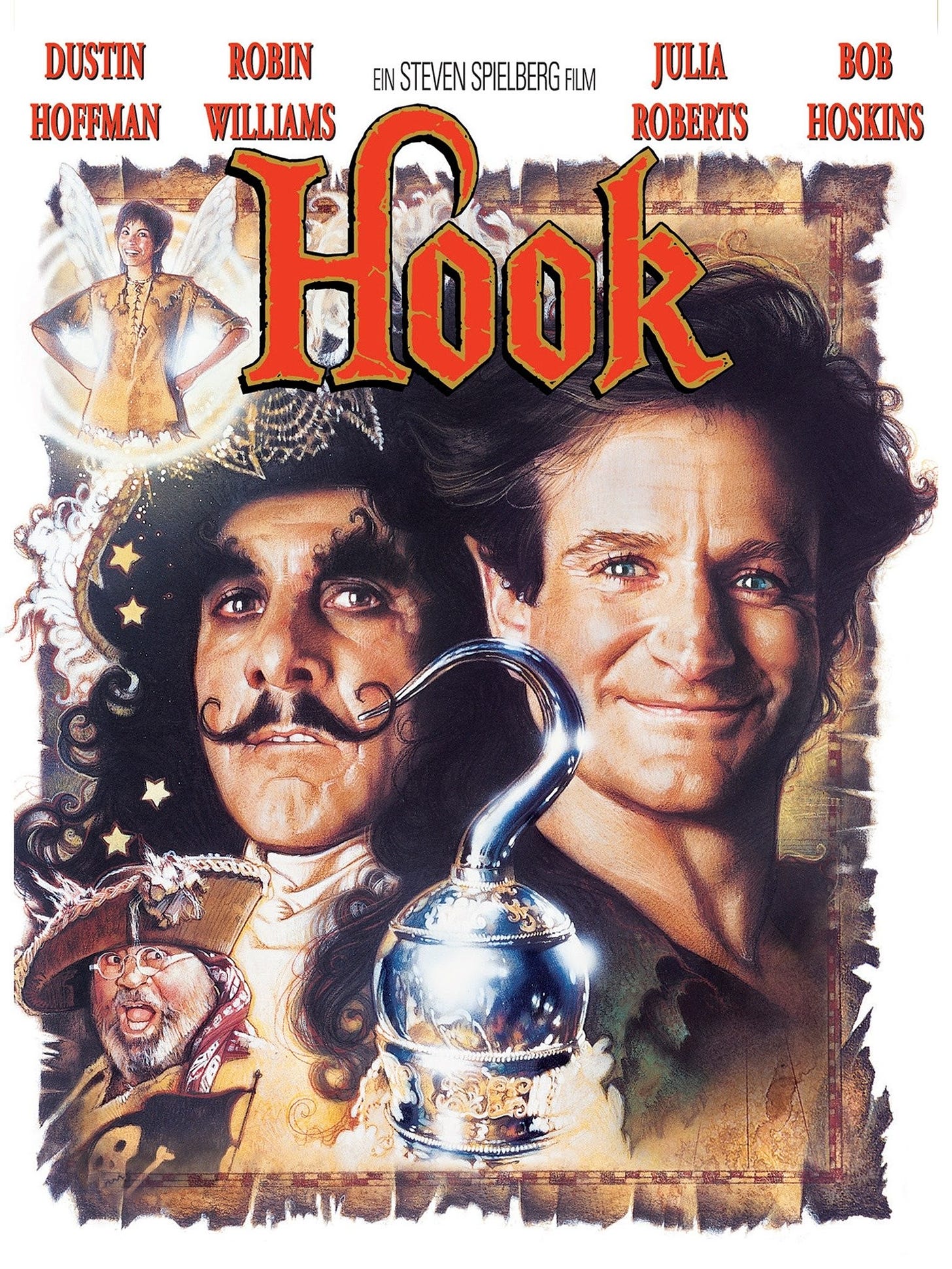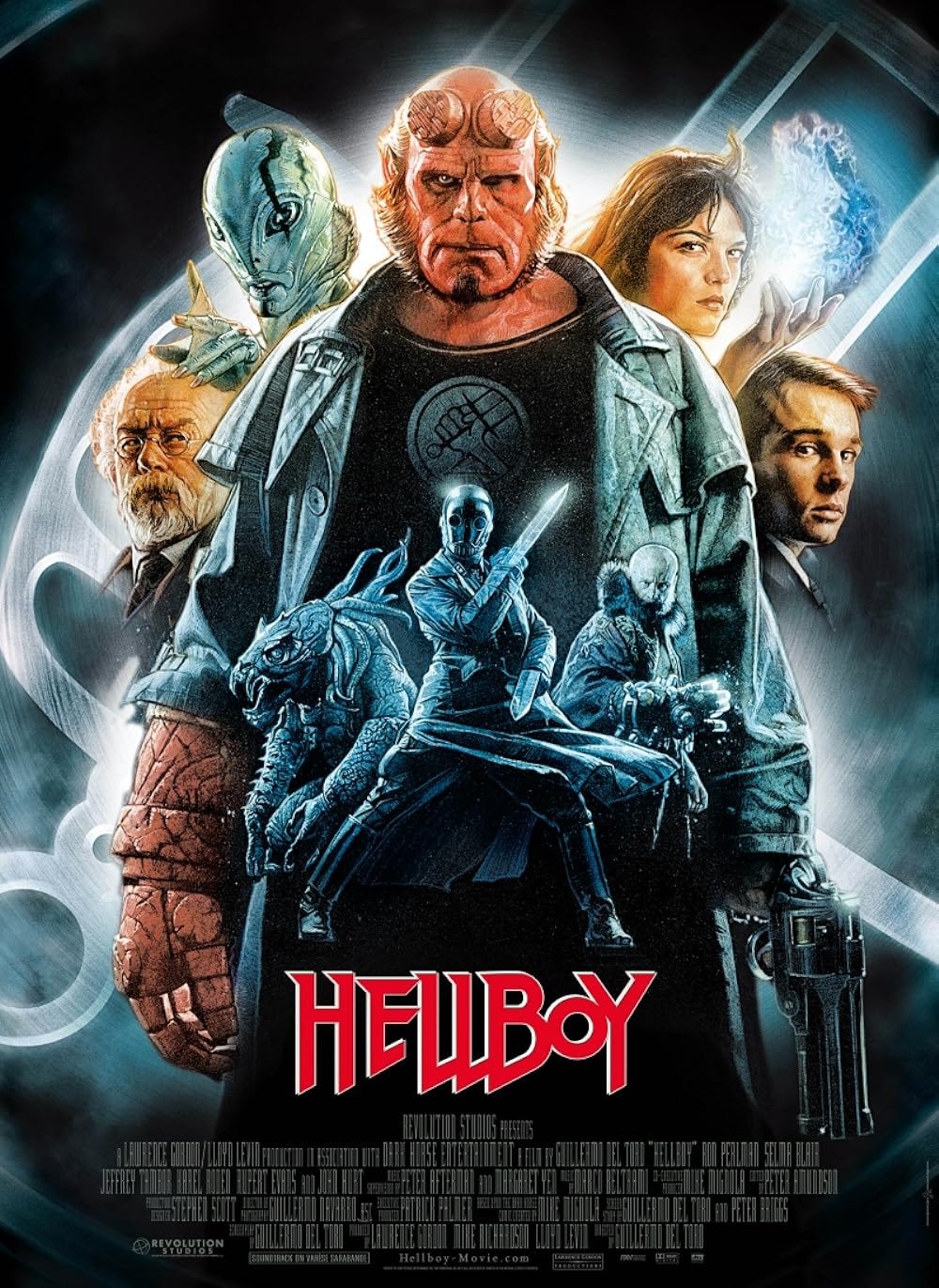Case Study in Outlining: Star Wars, Hook, and Hellboy
Breaking down existing media in terms of how their outlines work
Two weeks ago, I talked about the art of outlining and mentioned that you can even do this with your own media. The media that I picked was movies, because those can be a little easier than books, as they are frequently following a single character over time with an obvious protagonist and, due to time constraints, the stories have to be able to be told in a single two hour chunk without many digressions or side-plots. Today, I’ll be going through one movie that works with our existing outlining rules (Star Wars: A New Hope) and two movies that don’t: Hook, and Hellboy (the Guillermo del Toro version). If you’re looking for another movie that adheres more strictly to these rules, feel free to re-review my last two blogs which include breakdowns of WALL-E.
Let’s start with the one that works first: Star Wars: A New Hope
Once upon a time there was a farm boy who wants to go on an adventure.
One day, he meets two robots and hears a message from a princess.
Because the message mentions an old hermit, he goes to visit the old hermit near his home with the two robots.
But then, while he is gone, his home is destroyed.
Because his home is destroyed, he goes with the old hermit to save the princess.
But then, the planet they were looking for is destroyed.
But then their ship is pulled into a space station by a tractor beam.
Because they want to find the princess and they don't know where she is, they try to disable the tractor beam so they can escape.
But then they find out the princess is on the space station!
But then, when they rescue her and escape, the old hermit is killed.
But then, they find out the princess put plans on the droid for destroying the space station.
Because they want to do the right thing (or are hoping for a reward), they take the princess to her people.
But then, they find out the space station tracked the ship!
But then, with the plans, they're able to figure out the space station’s weakness and blow it up.
Until finally, the farm boy is celebrated as a great hero.
Again, as I mentioned two weeks ago with WALL-E, not every story can be broken down this easily. There are side plots (such as the romances between Han and Leia, and of Luke wanting to be a Jedi and trying to follow in his father’s footsteps) but we’re talking about boiling the whole story down to the bones. If you cannot look at your stories and do this, there is probably a problem somewhere.
Another thing to note is that you can take almost any of your outlines and, no matter how similar it is to an existing story, you can make it your own with the little details you add in.1 Take a look at the book Eragon and the comparisons that book has with Star Wars. Even if it is similar, there are enough differences that still allow that book to work twenty years after it was first published.
Writers have been ripping each other off since time began. Just look at Shakespeare’s work if you want any proof of that.
Now, let’s take a look at some places where this doesn’t work as well: Stephen Spielberg’s Hook.
This movie is incredibly nostalgic for me but, on rewatch, the plot points simply don’t follow logically. A lot of people hate this movie because it falls into sentiment. But sentimentality has never really bothered me, and the first half of this movie works pretty well! Let’s try our previous techniques:
Once upon a time, there was a lawyer who wants to provide for his family.
Every day, he works too hard and doesn’t spend much time with his kids.
One day, he gives an award to the woman who founded the orphanage where he grew up.
Because he returned to the place where he first grew up, his children are kidnapped by an old enemy.
Because his children are kidnapped, he has to become the boy he used to be, Peter Pan.
But then, he has grown too different from Peter Pan so becoming Peter is difficult.
Okay, so far this is working pretty good!
…and then, he goes to a baseball game.
The rest of the movie happens, and don’t get me wrong, I cry when Rufio dies (spoilers) and I feel a plug of nostalgia deep in the center of my chest, but about halfway through the movie, he just...goes to the baseball game where his son Jack is playing a game.
He needed to go to that baseball game, don’t get me wrong. It works thematically (he missed his son’s very important baseball game in one of the earlier scenes of the movie, he needs to understand how to be a better father by, ironically, watching Captain Hook be supportive) and the rest of the beats of the movie follow (mostly) point-to-point.
But there isn’t any reason for him to be there.
There’s a throwaway line, where they say that maybe stealing Captain Hook’s hook would make him feel more like Pan, and maybe I could buy that if they’d build it up earlier in the movie.
But they didn’t.
It is simply a shoddy explanation that gets a character from point A to point B without really explaining why they need to go there. It is the equivalent of my friend who said she can manipulate any words to make two story beats fit together in an outline.
No, no. You really can’t.
I’m not entirely sure how I would fix this. For one, I’m not Stephen Spielberg, and for another, I’ve never written a screenplay. We could maybe use the giant slingshot that tried to help him fly in an earlier scene, have him land near the pirate town and give him a chance to show the way he would pretend to be a pirate now, in comparison to earlier. Raise the stakes maybe with having him get caught and forcing him to watch the baseball game? A daring rescue from the Lost Boys, where one of them is killed, raising the stakes even further?
But it is much easier to find the fault in things than to fix them and any of these fixes have trade-offs, such as making the movie more serious or not giving enough time to the montage of Peter becoming closer to Pan. Maybe this was the closest this movie could get with the material provided. Maybe they didn’t have the time or they were over-budget.
Or maybe somebody just hadn’t fully thought it through.
Let’s move on to another movie that does not follow these rules: Guillermo del Toro’s Hellboy.
Again, I have to step in here before I am absolutely demolished in the comments: is this movie excellent? Yes. Is it beautiful with fun dialogue and interesting action? Also yes. Does it have some of the best creature designs of del Toro’s early work? Yes, yes, yes it does. Does it also have an illogical plot that does not follow beat to beat? Also, yes.
Let’s start from the beginning with Hellboy and use the technique we’ve learned:
Once upon a time, there was a son of Satan who wanted to be treated as a normal human.
Every day, he fought bizarre, otherworldly creatures to earth safe.
One day, he has a new agent assigned to him.
One day, he fights and kills Samael…
And then he goes to visit his ex-girlfriend in an insane asylum.
Should he? Yes, we need to introduce the character Liz. Does the scene work on its own? Yes, it explains backstory, defines their relationship, and works to establish the consequences of being a magical person in this world.
But does it works within the confines of storytelling? No, it doesn’t.
Luckily, this one is a little bit easier to fix. In fact, I wouldn’t be surprised if people disagree with me and say that there is a reason he goes to see Liz, even though it isn’t explicitly spelled out in dialogue. If they had done something where the humans compared Hellboy to Samael, saying something along the lines of “they come from the same place (hell)”, it would highlight Hellboy’s isolation and loneliness, and make sense that he goes out to connect with the only person besides his father that he’s ever really connected with on an emotional level. They could have also done something with the destruction of Samael’s eggs and needing the fire that Liz produces to do it, which would have required a discussion that forced her to move back in with Hellboy and the rest of the team. Or with Hellboy having been hurt far more than usual in this particular fight, which causes him to reflect on his mortality and visit Liz.
There are other problems I could go into with Hellboy2 but this particular aspect of the movie is useful in figuring out how to outline.
And, because Hellboy is still a great movie, it’s an excellent example of the number one rule of writing that supersedes all others: Even if it breaks all the rules, if it works, it works.
Think back to some of your favorite movies, books, TV shows. Do they work because of these rules or in spite of them? How do they keep you engaged and willing to spend precious hours watching, reading, or listening to them?
This post finishes up our miniseries on outlining, which I would consider to be one of the most important skills to learn when editing your work. Take a look at the first post on South Park rules, and the second post, on Pixar Storytelling. In two weeks, I’m going to start our next topic within macro-storytelling: worldbuilding and why it is useful for more than just speculative fiction.
In fact, having these similarities is going to make your life much easier if you’re ever working on a query letter as it will give you comp titles.
Why did the antagonists release Samael, for example? What purpose does the hellhound serve besides annoying the major characters and killing off cannon-fodder? The establishment of the villain’s motivation are also problems in the sequel to Hellboy, the Golden Army.





